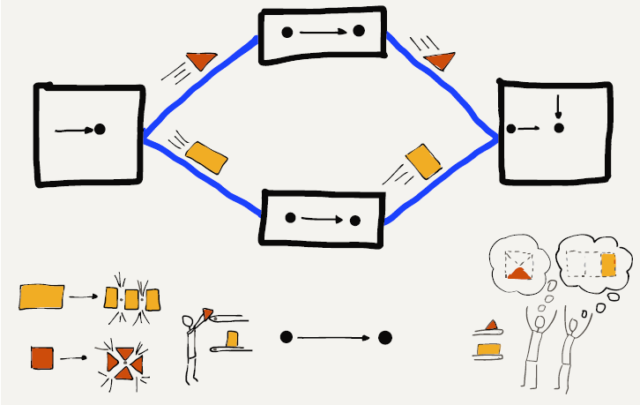The most important innovation that allowed messages to move more quickly across a multi-hop network was to break each message into small fragments and send each fragment individually.
In networking terms, these pieces of messages are called “packets”.
The idea of breaking a message into packets was pioneered in the 1960s, but it was not widely used until the 1980s because it required more computing power and more sophisticated networking software.
When messages are broken into packets and each packet is sent separately, if a short message was sent after a large message had begun, the short message did not have to wait until the entire long message was finished. The first packet of the short message only had to wait for the current packet of the large message to be finished. The system alternated sending packets from the long and short messages until after a while the short message was completely sent and the long message resumed making full use of the network connection.
Breaking the message into packets also greatly reduced the amount of storage needed in the intermediate computers because instead of needing to store an entire message for as long as a few hours, the intermediate computer only needed to store a few packets for a few seconds while the packets waited for their turns on the outbound link.
As networks moved away from the store-and-forward approach, they started to include special-purpose computers that specialized in moving packets. These were initially called “Interface Message Processors” or “IMPs” because they acted as the interface between general-purpose computers and the rest of the network.
Later these computers dedicated to communications were called “routers” because their purpose was to route the packets they received towards their ultimate destination.
By building routers that specialized in moving packets across multiple hops, it became simpler to connect computers from multiple vendors to the same network.

To connect any computer to the network, now all you needed to do was connect it to one router and then the rest of the communication details were handled by the other routers.
When multiple computers at one location were connected together in a “Local Area Network” (or LAN) using physical wiring, you would connect a router to the local area network. By sending data through the router, all the computers on the local area network could send data across the “Wide Area Network” (or WAN).